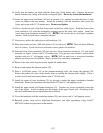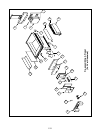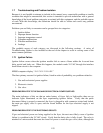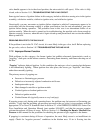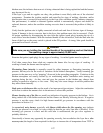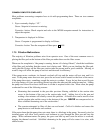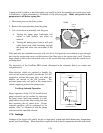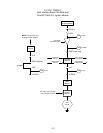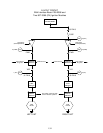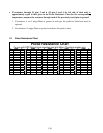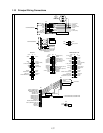
1-31
Loctite
®
PST56765 sealant or equivalent to prevent leakage. In very rare cases, a leak may develop
along one of the welded edges of the frypot. When this occurs, the frypot must be replaced.
If the sides or ends of the frypot are coated with oil, the most likely cause is spillage over the top of
the frypot rather than leakage.
The clamps on the rubber boots that hold the drain tube sections together may loosen over time as
the tubes expand and contract with heating and cooling during use. Also, the boot itself may be
damaged. If the section of drain tube connected to the drain valve is removed for any reason, ensure
that its rubber and clamps are in good condition and properly fitted around the drain tube when it is
reinstalled. Also, check to ensure that the drain tube runs downward from the drain along its whole
length and has no low points where oil may accumulate.
1.8 Troubleshooting Guides
The troubleshooting guides on the following pages are intended to assist service technicians in
quickly isolating the probable causes of equipment malfunctions by following a logical, systematic
process. An additional set of operator troubleshooting guides is contained in Chapter 6 of the
BIPH52/55-MPH52/55 Series Installation and Operation Manual (P/N 819-6087). It is suggested
that service technicians thoroughly familiarize themselves with both sets.
1.8.1 Troubleshooting the 24 VAC Circuit
Prior to checking for problems associated with the 24 VAC circuit, ensure that the unit is connected
to a power supply, the drain valve is fully closed, and the controller is on and is calling for heat
(green dot appears under heat indicator and display toggles between LOW and TEMP).
NOTE: All voltage measurements must be made within 4 seconds of the unit calling for heat. If unit
does not fire within 4 seconds, ignition modules will lock out and controller must be turned off, then
on to reset.
The following processes will assist you in troubleshooting the 24 VAC circuit and ruling it out as a
probable cause:
• 24 VAC is not
present on the interface board J3 pin 9 (LED 5 (GV)) and, on dual units, on
J1 pin 9 (LED 1 (GV)).
1. If LED 3 is not continually lit, the probable causes are a failed 24 VAC transformer or failed
wiring between transformer and interface board.
2. If LED 3 is continually lit, check the right PWR terminal (LED 4) for 24 VAC. On dual
units, also check the left PWR terminal (LED 2) for 24 VAC. Verify that the F2 fuse is not
blown.
a. If 24 VAC is not present, the probable cause is a failed interface board, blown fuse or a
defective heat relay.
b. If 24 VAC is present, check for 24 VAC on V1S (or V1D and V2D, if dual unit).



